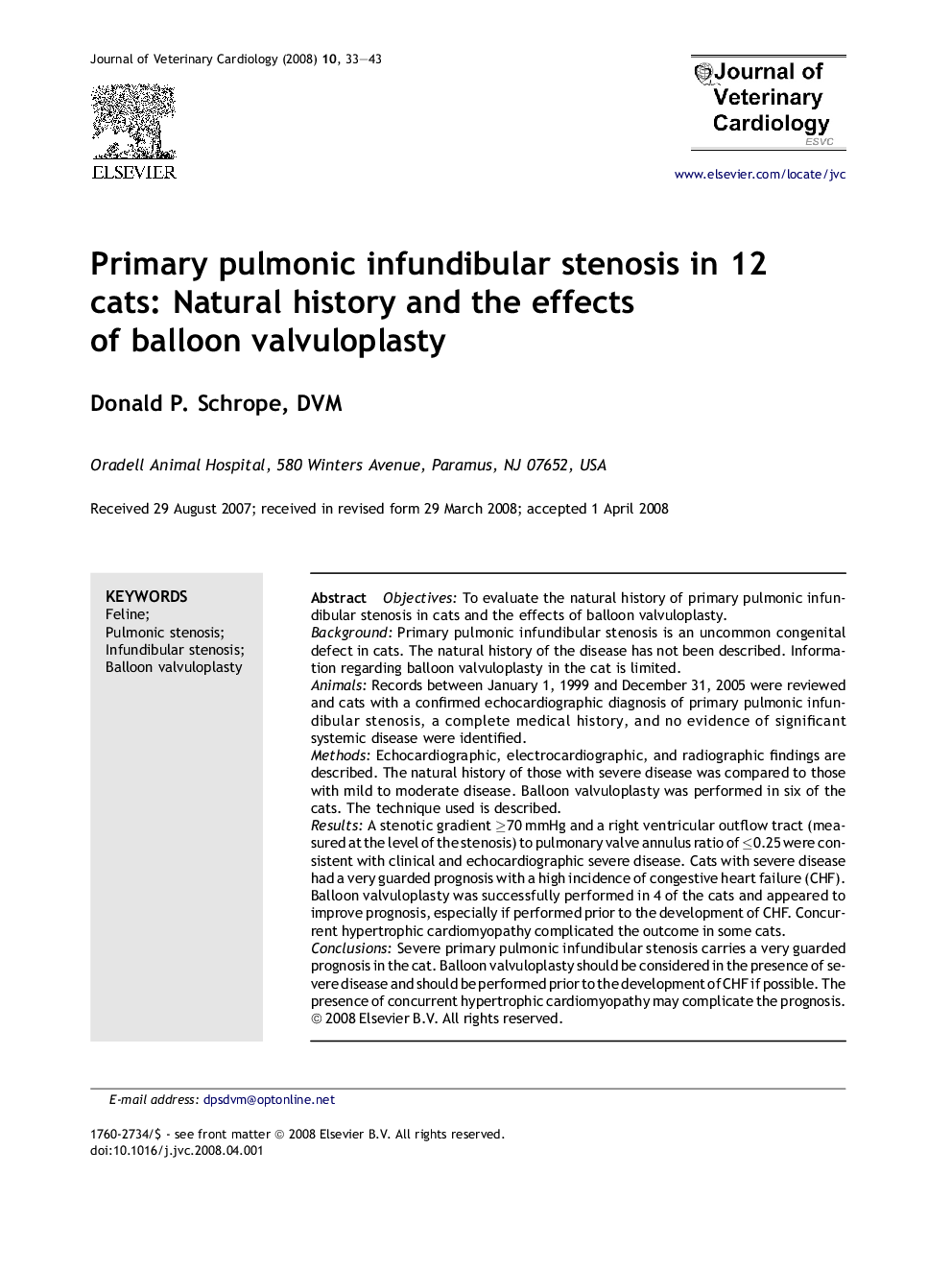| Article ID | Journal | Published Year | Pages | File Type |
|---|---|---|---|---|
| 2400390 | Journal of Veterinary Cardiology | 2008 | 11 Pages |
ObjectivesTo evaluate the natural history of primary pulmonic infundibular stenosis in cats and the effects of balloon valvuloplasty.BackgroundPrimary pulmonic infundibular stenosis is an uncommon congenital defect in cats. The natural history of the disease has not been described. Information regarding balloon valvuloplasty in the cat is limited.AnimalsRecords between January 1, 1999 and December 31, 2005 were reviewed and cats with a confirmed echocardiographic diagnosis of primary pulmonic infundibular stenosis, a complete medical history, and no evidence of significant systemic disease were identified.MethodsEchocardiographic, electrocardiographic, and radiographic findings are described. The natural history of those with severe disease was compared to those with mild to moderate disease. Balloon valvuloplasty was performed in six of the cats. The technique used is described.ResultsA stenotic gradient ≥70 mmHg and a right ventricular outflow tract (measured at the level of the stenosis) to pulmonary valve annulus ratio of ≤0.25 were consistent with clinical and echocardiographic severe disease. Cats with severe disease had a very guarded prognosis with a high incidence of congestive heart failure (CHF). Balloon valvuloplasty was successfully performed in 4 of the cats and appeared to improve prognosis, especially if performed prior to the development of CHF. Concurrent hypertrophic cardiomyopathy complicated the outcome in some cats.ConclusionsSevere primary pulmonic infundibular stenosis carries a very guarded prognosis in the cat. Balloon valvuloplasty should be considered in the presence of severe disease and should be performed prior to the development of CHF if possible. The presence of concurrent hypertrophic cardiomyopathy may complicate the prognosis.
